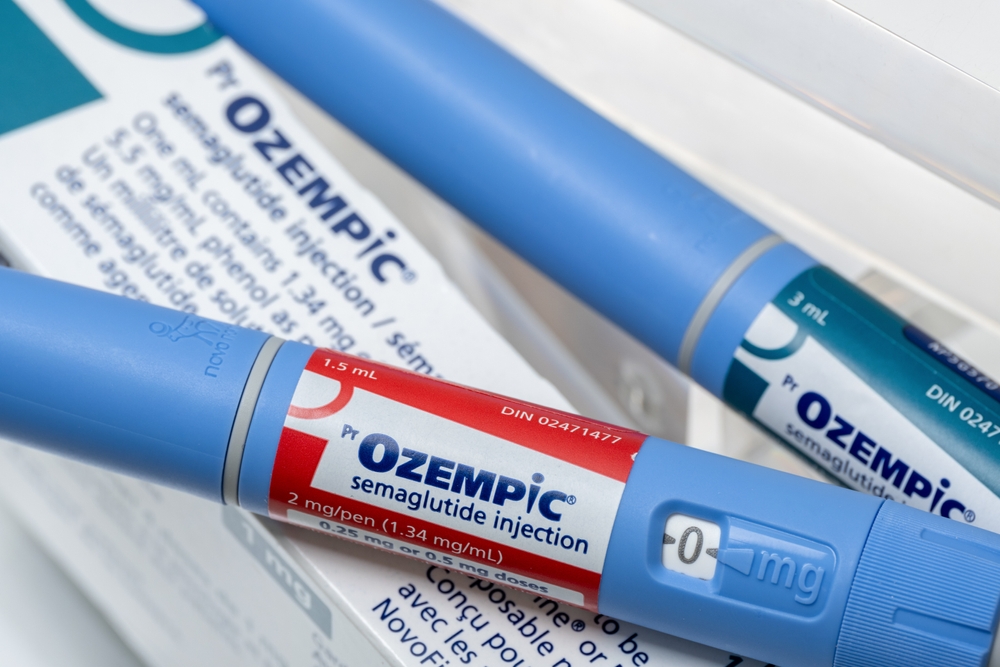
At the Oscar’s last month, host Jimmy Kimmel, during his opening monologue, gazed out at the crowd and said: “When I look around this room, I can’t help but wonder: Is Ozempic right for me?”
Unless you’ve been living under a rock, you know about the Ozempic craze.
It is arguably the most popular pharmaceutical product since oxycodone. Semaglutide (a GLP-1 agonist, which is the active ingredient in Ozempic) was initially approved by the FDA for the treatment of type-2 diabetes in 2017. But then, in 2022, it was additionally approved for the treatment of long-term weight management. That’s when things took off.
Sales skyrocketed. Novo Nordisk reported $33.7 billion in total sales for 2023, an increase of 36%, with GLP-1 medications leading the way. And in 2024, Ozempic is projected to lead all pharmaceutical sales worldwide (with the exception of Keytruda, a highly effective cancer treatment).
As a marketing professional, you look at the wild success of such a product and ask, “How is this happening?” Let’s start with the advertising.
Define the Job That’s Getting Done
The Ozempic campaign is well conceived and crafted. A tip of the hat to all who worked on it. But, we all know the “O-O-Ozempic!” commercials are only part of the story.
Ozempic is selling like ironic hotcakes because it works. Like, really works. Almost like magic. (It’s no coincidence the campaign’s featured song is a twist on the old ‘70s tune “Magic.”) A chronic problem that plagues millions of Americans—one that has eluded the $76 billion diet industry for decades—just got solved.
In his book Competing Against Luck, Harvard Business School professor Clayton Christensen (the guy who coined the term “disruptive innovation”) talks about how great marketing, at its core, shows us how a product or service gets a job done. In short: It presents credible solutions to significant problems. And the perception in the marketplace right now is that Ozempic, hands down, is the best solution to the problem of being overweight or obese.
So then we must ask ourselves: Why is being overweight or obese perceived as such a significant problem? The answer is not as simple as it may seem.
Unearth the ‘Why’ Behind It
The obvious answer is health. Being overweight or obese can have serious impacts on health, putting you at greater risk for cardiovascular diseases, type 2 diabetes, musculoskeletal disorders and certain cancers.
That’s the practical side, and it’s what most people cite first. But there’s also the emotional side. And quite often, our biggest problems are emotionally driven. (This can throw off marketers whose eyes are set to look for straightforward, linear, if/then answers.)
According to a National ACTION Study, 82% of obese individuals think their weight is entirely “their fault.” And 73.9% said they’re motivated to diet to “improve self-esteem.”
Many overweight or obese individuals feel a sense of shame, and self-blame, about their weight and appearance. That’s a lot of negative emotion. And, as I talked about at TEDx a few years ago, most brand promises, however hopeful and aspirational, are driven by a dark undercurrent.
When we, as marketers, work to establish the positioning of a product or service in the marketplace, we tend to focus on what benefit it can bring to its target audience. But a benefit does not necessarily solve a problem. And if it doesn’t solve a problem, that benefit won’t be very meaningful to your audience.
So instead of focusing on the positive (i.e., the benefit), start with the negative (i.e., the problem). If you can unearth your audiences’ key existential pain point—the emotional problem that needs to be solved—then the most compelling benefits will reveal themselves.
Examine Other Brand Promises
As a thought experiment, take a look at the following problem/solution examples. For each one, we’ll start with an emotional driver felt deeply by its target audience … then reveal the brands that, through their brand promises, present as the self-evident solutions to that problem.
PROBLEM: “I have feelings of shame about my weight.”
SOLUTION: Ozempic/Nutrisystem/Nike
PROBLEM: “I want my kids to think I’m a great parent.”
SOLUTION: Disney/McDonald’s/XBOX
PROBLEM: “I don’t feel as successful as I should be at this age.”
SOLUTION: Mercedes-Benz/Nordstrom/AMEX
PROBLEM: “My family is stressed out. I want our home to feel cozier.”
SOLUTION: Coca-Cola/Hershey’s/Yankee Candle
PROBLEM: “I worry about my carbon footprint and the planet.”
SOLUTION: Tesla/Patagonia/Whole Foods
Ease Their Pain
Walt Disney famously said, “People spend money when and where they feel good.” And people feel good when their anxieties are alleviated.
This is no small thing. Anxiety disorders are the most common of all mental disorders in the U.S., and generalized anxiety produced by stress is weaved into the very fabric of our culture. It may not be an overstatement to say that, as a society, anxiety is our brand (so to speak).
We see this in all walks of life. Stress about your appearance; stress about work; stress about aging/health; stress about juggling responsibilities; stress about family; stress over big decisions; stress over finances; stress over friendship issues; stress over marriage issues; and on and on and on.
If you have a product or service that can offer some relief, that can ease your customers’ emotional pain, that’s your key. Remember that our biggest problems can be emotional; and that even our “practical” problems have an emotional component. Before you start listing differentiators or key benefits—before you allow yourself to fall into the trappings of wholly practical concerns—start by identifying the emotional stressors your audiences are dealing with and how your solution might serve them.
Once you have that, you’ll be on the road to finding some real magic.
Greg Ippolito is the president and creative director at Ippolito Media Arts (IMA), a B2B digital marketing firm.
The post What Marketers Can Learn From the Ozempic Craze appeared first on Chief Marketer.